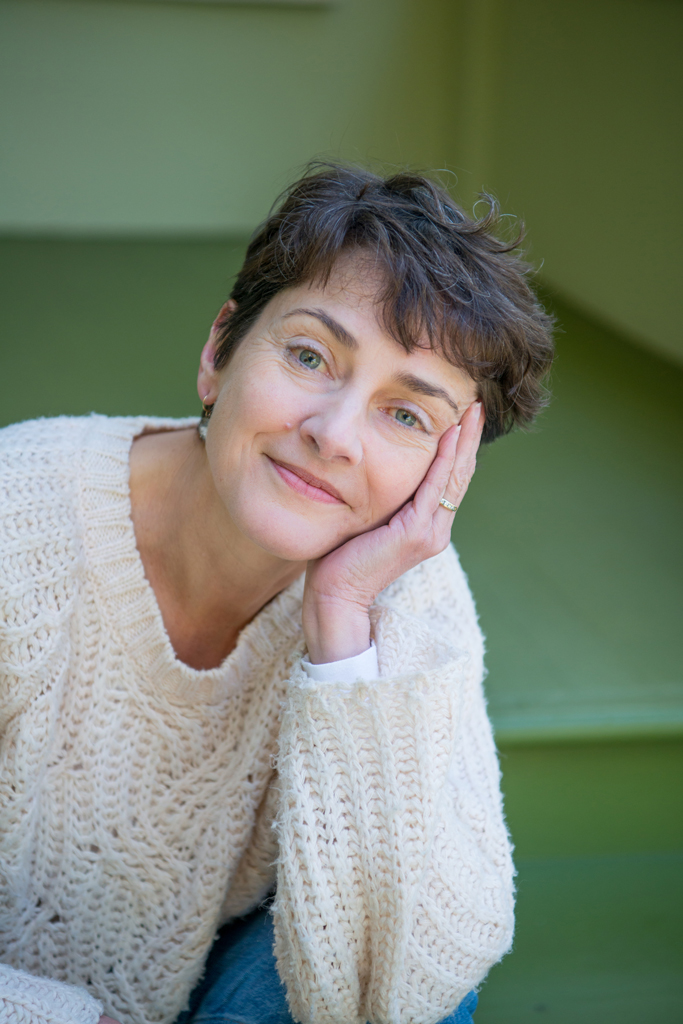
Photo: Amy Perl Photography
Interview with Annie
Question: Are you a twin?
Annie: Nope. I wrote about twins because I’ve always thought they were fascinating—imagine having a built-in friend your own age, right in your house! Like Miri, I’m a younger sister, and like Miri, I felt as though my big sister got to do all the interesting things first. That’s probably another reason why I’m into twins—imagine being perfectly even with your brother or sister! And I find identical twins even more fascinating—imagine having a brother or sister who’s genetically EXACTLY the same as you! That’s amazing!
Question: I can see you’re really into twins.
Annie: Who isn’t? Twins are cool.
Question: Why did you write The Magic Half?
Annie: I wrote it because I wanted to read it. The Magic Half is like the books I loved to read when I was a kid—a story about regular people living in the regular world, except that magic happens. Lots of the magic books being written now take place in worlds that are different than ours, worlds with witches and wizards roaming around cursing each other. I wish there were witches and wizards in my world, and those books always make me feel terribly disappointed with my life. So I wrote a book that mixed magic with the plain old world, which makes me feel more hopeful.
Question: When Miri travels back in time, she does it by looking through the lens of a pair of glasses. Where’d you get that idea?
Annie: I am always looking for secret rooms that nobody else has noticed (I found one in my house once—that was a great day), and I am a big believer in houses being haunted by their pasts. The lens that Miri finds is a lot like a tiny window to an earlier version of the house. The reason it’s a lens? I’m not sure—I liked picturing the glass glinting on Miri’s ugly wallpaper.
Question: Miri lands in 1935—why did you pick that year?
Annie: Beats me—I was as surprised as anyone. I know a lot more about, say, 1860 and 1900 than I do about 1935, but once I found myself there, it seemed vital to the story. It was a lucky thing, too, because my father remembers 1935, and I could ask him a million questions, such as “Were there batteries in 1935?” (The answer: yes.)
Question: If you could travel back in time, what year would you choose to land in?
Annie: Do I get to pick the place, too?
Question: Sure.
Annie: Top choice at the moment is a certain swamp in England in 1071. I’d like to see what was going on in Venice in about 1780, too. Also, I’d like to meet Louisa May Alcott. Any of these would be fine with me.
Question: You like Louisa May Alcott?
Annie: I love Little Women. I’ve read that book easily a hundred times—I can still recite the first page by heart. What’s wonderful about it is that the characters are real, full girls, not caricatures, and we get to see them develop over a long period of time. I think we’re spoiled by all the fabulous, complex characters in kids’ books these days—we don’t realize that before Louisa May Alcott, these kind of realistic characters were unheard-of. She invented the prototype, bless her.
Question: I guess you must also like Half Magic by Edward Eager, right?
Annie: Love it. Edward Eager’s books are exactly what I mean when I talk about regular magic: the characters are normal-type kids who live normal-type lives—until something magical occurs that sets the story in motion. So calling my book The Magic Half is partly in homage to Edward Eager. But I’d be a rat if that was the only reason the book got its title. Pairs and halves are very important in this story, and The Magic Half suggests that.
Question: Will there be a sequel to The Magic Half?
Annie: Why yes, there will be! In fact, there is! It’s called Magic in the Mix, and you can read more about it right here.

